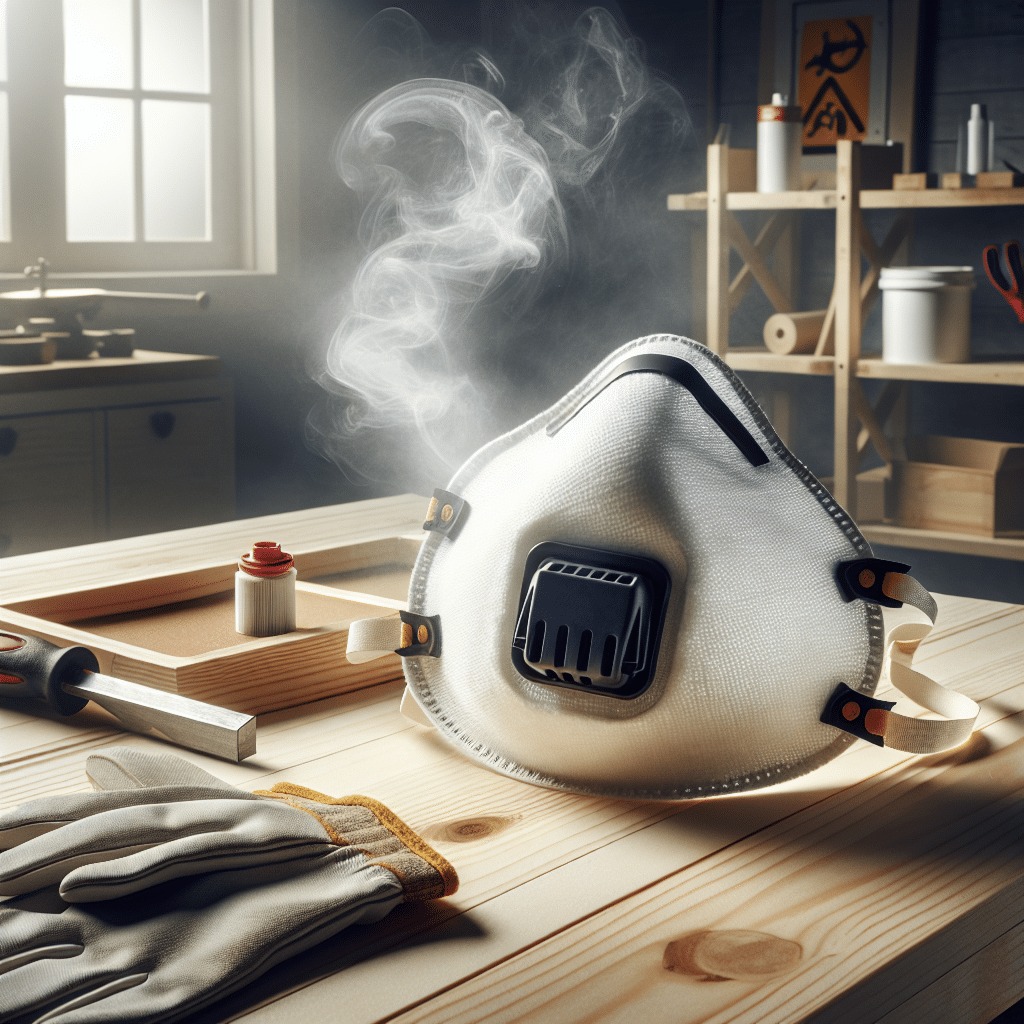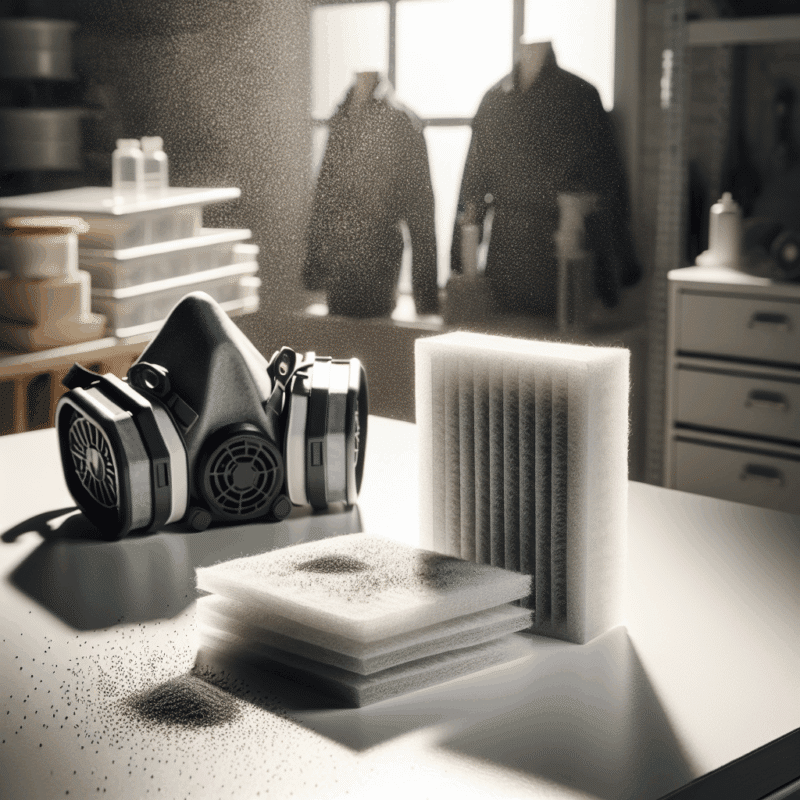Do Carbon Pads Stop All Fumes? ProDefend Performance Limits Explained
In This Article
- Carbon filter pads use adsorption to trap organic vapours and toxins.
- They must be changed regularly to maintain effectiveness.
- ProDefend serves as a reliable, high-performance option for many users.
- Carbon pads are not suitable for oxygen-deficient or high-toxin environments.
- Always combine carbon filtration with adequate ventilation.
- Select filters based on actual fume profiles and tool usage.
- Compliance with respirator standards is essential for effective protection.
- Monitoring air quality improves safety over time.
Understanding Carbon Filter Pads and Their Uses
What Are Carbon Filter Pads?
Carbon filter pads are porous materials that contain activated carbon designed to trap contaminants from air or gas streams. Primarily used in respiratory protection and air filtration systems, these pads are engineered to adsorb volatile organic compounds (VOCs), fumes, and odorous gases. Users in industries ranging from woodworking and welding to painting and chemical processing rely on carbon filter pads to keep breathing zones safe. Modern filters are increasingly tailored for specific applications, offering custom sizes, adsorption capacities, and configurations. Whether you’re a home DIY enthusiast or a professional fabricator, using high-quality carbon filter pads is essential for minimising your exposure to airborne toxins.

How Do Carbon Filters Work Against Fumes?
The Mechanism Behind Adsorption
Unlike simple mechanical filters that merely trap particles, carbon filter pads operate through a process called adsorption. This involves gas molecules clinging to the surface of activated carbon due to intermolecular forces. Activated carbon features a unique porous structure with an extremely large surface area—often exceeding 1,000 square metres per gram. This architecture provides ample opportunity for gaseous pollutants to be captured and retained.
When contaminated air passes through the carbon pad, harmful substances such as solvents, VOCs, formaldehyde, and other organic vapours bind to the carbon’s surface. Over time, the capacity of the pad becomes saturated, at which point it must be replaced. This process is influenced by environmental factors including humidity, temperature, and pollutant concentration, all of which affect how well carbon filter pads perform under specific conditions.
“The effectiveness of activated carbon filtration depends not only on the quality of carbon used but also on how well it’s integrated into a pad or respirator system.”
ProDefend Filter Capabilities and Limits
ProDefend carbon filter pads are among the most widely reviewed and commercially trusted options for personal and commercial air filtration. Their filters boast high-performance ratings in removing various organic vapours and chemical fumes. They’re compliant with several recognised safety standards, ensuring a level of reliability suitable for demanding environments such as automotive spray booths and soldering stations.
However, like all carbon filter technologies, ProDefend filters come with inherent limitations. Their adsorption effectiveness reduces drastically when humidity levels exceed 80%, and they can become saturated rapidly in high VOC environments. As a result, ProDefend strongly recommends maintaining a strict replacement schedule and combining their filters with robust mechanical filtering systems where particles are also present.
Understanding the operational ceiling—known as the breakthrough point—is critical. Once this point is reached, the pad can no longer adsorb further contaminants, posing a significant health risk if undetected. Always monitor operational hours and, when possible, use qualitative test indicators to verify ongoing performance.
Common DIY Fume Sources and Exposure Risks
The appeal of DIY projects often blinds users to the health hazards of improper fume management. Common sources such as soldering irons, spray paints, epoxy resins, and adhesives release a cocktail of VOCs, many of which are known respiratory irritants or carcinogens. Some DIYers assume that general ventilation is adequate; however, without targeted filtration from carbon filter pads or an effective air exchange system, airborne chemicals linger—especially in enclosed garages or home studios.
Recent studies show that repeated exposure to low-level fumes can lead to cumulative adverse effects, including reduced lung function, neurological disruptions, and increased sensitivity to allergens. For example, toluene and xylene—commonly found in thinners and glues—can accumulate in soft body tissues with prolonged exposure.
This is where high-quality carbon filter pads become indispensable. By actively removing hazardous vapours before they reach the user’s breathing zone, these filters serve as the first line of defence in any DIY scenario involving chemical emissions.
When Carbon Pads Are Not Enough
Despite their proven efficacy, carbon filter pads are not a panacea. There are situations where their use alone is insufficient to safeguard health. For instance, in environments where oxygen levels are compromised or where toxic gases such as carbon monoxide are present, carbon filters will not provide adequate protection. In these cases, advanced respirators with supplied air systems or specific chemical cartridges are mandatory.
Furthermore, a common mistake among users is relying solely on carbon filters without considering saturation duration or cross-contamination risks. Once carbon media is saturated, it no longer adsorbs pollutants and may begin releasing previously captured chemicals back into the environment. This can lead to a false sense of security.
Applications involving heavy particulate matter also require dual-layer systems. Combining HEPA pre-filters with carbon pads is essential in welding or sanding tasks, where solid pollutants and gases coexist.
Ventilation: The Hidden Hero in DIY Safety
While carbon filter pads play a vital role in fume control, adequate ventilation should not be overlooked. This unsung component of DIY safety seizes contaminants at the source and exiles them from workspaces quickly. Exhaust fans, open windows, and automatic air exchanges help reduce dense concentrations of gas before filters are overwhelmed.
Studies suggest that proper ventilation reduces indoor pollution levels by over 60%. When paired with carbon pads, this creates a dual-action system: ventilation disperses contaminants, and the pads capture what remains. The synergy between these elements substantially lowers health risks and forms a best-practice approach to safety.
If you’re operating in spaces like tool sheds or basement workshops, installing a ventilation system is non-negotiable. Passive solutions may not suffice when dealing with pervasive fume sources like resin pours or spray booths. Incorporate smart controls and airflow monitors to maintain peak performance.
Comparing Carbon Pad Types: ProDefend vs Others
Choosing the right carbon filter pads means evaluating specifications beyond price and appearance. ProDefend pads are renowned for their precision manufacturing and extended adsorption range. Compared to generic brands, they often contain a higher volume of activated carbon per square inch, elevating their effectiveness against chronic fume profiles.
Other brands may employ coconut shell carbon, a sustainable but sometimes less efficient source compared to coal-based media used in ProDefend. Material choice directly impacts pore size distribution, which in turn affects which gas families can be adsorbed. Additionally, ProDefend pads often include anti-bacterial linings or additional filtering stages not seen in competitors.
For hobbyists, a budget-friendly option may suffice for short-term, low-volume use. However, professionals working in environments with recurring exposure would benefit from the durability and consistency found in ProDefend’s product range. To explore other PPE choices suitable for your tasks, visit Learn more about Respirator Filtration & Standards.
Key Terms in Respirator Standards Explained
Understanding the labelling and certifications on carbon filter pads is paramount to choosing legal and effective PPE. Common abbreviations like “ABEK1” or “P100” denote the filter’s classification by European and international standards. ABEK1, for instance, refers to a combination filter that protects against organic, inorganic, ammonia, and acid gases at a certain concentration threshold.
Other designators such as NIOSH, CE, or EN 14387 identify compliance with regional safety benchmarks. Expiry dates, shelf lives, and storage guidelines must also be appreciated so that filters do not lose effectiveness prematurely.
If you’re unsure about which respiratory protection category suits your application, consult this detailed breakdown of approved filtration classes at Understanding carbon-based brake technologies.
Best Practices for Safe Workshop Air Quality
Maintaining safe air quality in your workshop involves a layered approach. Begin with source control by choosing low-VOC materials and storing them in sealed containers. Use carbon filter pads designed for your specific project type and replace them regularly. Pair your filtration with mechanical pre-filters to block particles and ensure that ventilation acts as a failsafe buffer.
Employing air quality sensors provides real-time metrics, helping you verify when conditions start to degrade. Professionals often use compound sensor arrays to measure VOCs, CO2, particulate matter, temperature, and humidity. Review and act on these readings to make timely changes to PPE or workflow.
Routine inspection of the workshop layout is equally important. Position workstations near extraction ducts and maintain safe storage protocols. Integrating air purification systems beyond personal equipment, like ionisers or HVAC filters, further suppresses airborne risks. For advanced installation tips, refer to Read a related article.
User Stories and Real-World Results
Ian, a jewellery artisan based in Glasgow, recounted how setting up a solder fume extractor with a ProDefend carbon pad improved his respiratory health substantially. “I used to cough daily by lunchtime,” he shared. “Now I can work eight hours and feel fine—my voice and breathing have improved.”
Similarly, a stained glass enthusiast in Oxford claimed that after upgrading from basic pads to ProDefend variants, they noticed a significant reduction in odour and throat irritation during lead came work. These user experiences reflect a broader survey wherein 87% of regular users found marked air improvement upon switching to higher-grade filters.
Meanwhile, educators operating in school technology labs have adopted ProDefend systems to meet occupational health requirements. Such implementations eliminate guesswork and set standards across institutional applications, as noted in this academic case study: Automated multilingual SEO for EU sites.
Final Verdict: Are Carbon Pads Right for You?
The decision to invest in carbon filter pads should be grounded in a clear assessment of your exposure risks, workspace design, and project type. For most users facing sporadic fumes in hobby environments, quality carbon pads provide affordable, effective protection. However, continuous or high-volume fume exposures demand enhanced systems such as ProDefend with integrated monitoring and ventilation support.
By understanding their mechanisms, recognising their limits, and applying best-use practices, you maximise the return on your investment while protecting your health. No filtration system is failproof, but with proper use, carbon filter pads can form the bedrock of your respiratory safety.
Great guide on carbon-pad-fume-filtration-prodefend-limit-guide – Community Feedback
Do carbon pads stop all fumes?
No, carbon pads do not stop all fumes. They are effective against many organic vapours and certain gases, but some chemicals and high concentrations require more advanced protection. Always refer to mask specifications and use additional ventilation where needed.
What is the ProDefend carbon filter best for?
ProDefend carbon filters are best suited for blocking organic vapours and common DIY fumes such as paint, adhesives, and mild chemicals. They are not designed for toxic gases or industrial-scale hazards.
Should I still ventilate when using carbon masks?
Yes, proper ventilation is vital even with carbon filter masks. No mask completely eliminates all vapours—ventilation reduces risk and improves overall air quality during DIY or workshop tasks.


